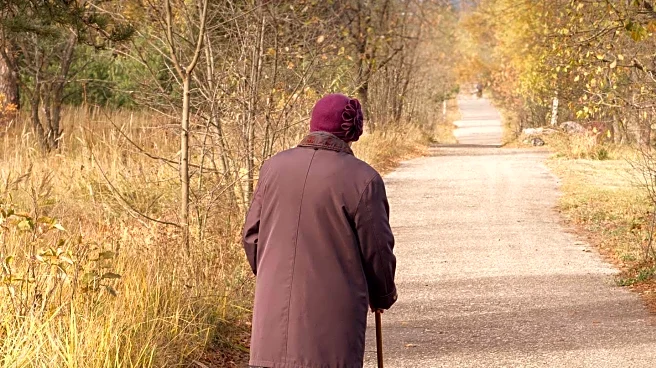What's Happening?
Recent research published in Nature Medicine highlights the benefits of regular walking in reducing the risk of Alzheimer's disease. The study, led by neurologist Jasmeer Chhatwal, analyzed data from 296
adults aged 50 to 90 with elevated amyloid-beta levels, a protein associated with Alzheimer's. Participants who walked between 3,000 to 5,000 steps daily experienced a three-year delay in cognitive decline, while those walking 5,001 to 7,500 steps saw a seven-year delay. The study suggests that walking helps slow tau protein buildup, a hallmark of Alzheimer's, and promotes brain health through increased blood flow and neuronal growth.
Why It's Important?
This study underscores the potential of lifestyle changes, particularly regular walking, in mitigating Alzheimer's disease progression. With Alzheimer's affecting millions in the U.S., identifying accessible preventive measures is crucial. Walking, a simple and cost-free activity, offers significant cognitive benefits, potentially reducing healthcare costs and improving quality of life for older adults. The findings may encourage public health initiatives to promote physical activity as a preventive strategy against cognitive decline, benefiting individuals and society by reducing the burden of Alzheimer's.
What's Next?
The study's authors hope to empower individuals to protect their cognitive health by incorporating regular walking into their routines. Public health campaigns may focus on promoting achievable step goals, such as 3,000 to 5,000 steps daily, to encourage more people to adopt active lifestyles. Further research could explore the specific mechanisms by which walking influences brain health and identify additional lifestyle factors that contribute to Alzheimer's prevention.
Beyond the Headlines
The implications of this study extend beyond immediate health benefits, potentially influencing cultural attitudes towards exercise and aging. As awareness grows about the link between physical activity and cognitive health, societal norms may shift towards prioritizing regular movement as a key component of healthy aging. This could lead to increased investment in community infrastructure that supports walking and other forms of exercise.











